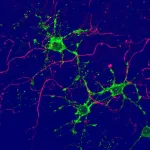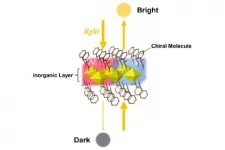(Press-News.org) Diseases that affect tubular structures in the body, such as the gastrointestinal (GI) system, vasculature and airway, present a unique challenge for delivering local treatments. Vertically oriented organs, such as the esophagus, and labyrinthine structures, such as the intestine, are difficult to coat with therapeutics, and in many cases, patients are instead prescribed systemic drugs that can have immunosuppressive effects. To improve drug delivery for diseases that affect tubular organs, like eosinophilic esophagitis and inflammatory bowel disease, a multidisciplinary team from Brigham and Women's Hospital, Massachusetts General Hospital and Massachusetts Institute of Technology (MIT) designed a stretchable stent based on the principles of kirigami that is capable of supporting rapid deposition of drug depots. The research is described in Nature Materials.
"We know that injected drugs like steroids can help relieve certain GI conditions, but the challenge is delivering them in a segment of a tubular organ multiple centimeters in length," said corresponding author Giovanni Traverso, MB, BChir, PhD, a gastroenterologist and biomedical engineer in the Brigham's Division of Gastroenterology and the Department of Mechanical Engineering at MIT. "One of the strategies we came up with was a dynamic stent, which can be stretched to change shape and deliver drugs circumferentially and longitudinally to cover the tube."
To design the drug-depositing stent system, the team looked to the principles of kirigami, a Japanese form of paper art similar to origami that includes cutting paper. The researchers previously demonstrated that the buckling properties of kirigami-based designs can be used to engineer footwear outsoles that generate friction to prevent slips and falls. The kirigami stent has a snakeskin-like, cylindrical design that expands to engage pop-out needles, which are controlled by air pressure applied to a soft actuator. This allows for the circumferential delivery of therapeutics into the GI tract, as well as the vasculature and airways. The stent is removed shortly after the delivery of the therapeutic and is not implanted in the body. It can be manufactured in various sizes, and drug delivery can be controlled by varying the thickness of the kirigami shell, needle length and applied pressure.
After refining the mechanics of the kirigami stent, the researchers coated the design with budesonide-loaded polymeric micro-particles to support extended drug delivery, which was then tested in the esophagi of pigs. Budesonide is a drug commonly used to treat a range of gastrointestinal diseases. The kirigami needles were left in their popped-out configuration for two minutes before the stent was removed. When the researchers examined the animals at different times (one, three and seven days after the drug's delivery), they found concentrations of the therapeutic in the animal tissue at all time points, indicating that the delivery system can promote the sustained administration of therapeutics.
"Our simple approach allows us to develop a drug-releasing system that can be applied to various length-scales and be matched with the size of any target tubular organ," said first author Sahab Babaee, PhD, a research affiliate in the Division of Gastroenterology at the Brigham and an MIT research scientist.
The researchers will continue to refine the drug delivery system in animal models and work toward developing it for use in humans. They hope that the system can also be deployed in structures like the trachea and iliac artery, thereby improving the targeted, sustained delivery of therapeutics for a range of diseases.
"The vision here is to think about the long-term release of the drug, so that one day a patient could receive local delivery of a treatment and have therapy for weeks, if not months or even years," Traverso said. "Removing the need to routinely take a prescribed medication, like a steroid or other drug, can really transform the patient experience."
INFORMATION:
Other authors on the paper include Yichao Shi, Saeed Abbasalizadeh, Siddartha Tamang, Kaitlyn Hess, Joy E. Collins, Keiko Ishida, Aaron Lopes, Michael Williams, Mazen Albaghdadi, and Alison M. Hayward.
This work was funded in part by the Karl van Tassel (1925) Career Development Professorship and the Department of Mechanical Engineering at MIT. Traverso is a co-inventor on provisional patent applications for the technology described. Complete details of all relationships for profit and not-for-profit for Traverso can be found at the following link: https://www.dropbox.com/sh/szi7vnr4a2ajb56/AABs5N5i0q9AfT1IqIJAE-T5a?dl=0.
Paper cited: Babaee, S et al., "Kirigami-inspired stents for sustained local delivery of therapeutics" Nature Materials DOI: 10.1038/s41563-021-01031-1.
CAMBRIDGE, MA -- Inspired by kirigami, the Japanese art of folding and cutting paper to create three-dimensional structures, MIT engineers and their collaborators have designed a new type of stent that could be used to deliver drugs to the gastrointestinal tract, respiratory tract, or other tubular organs in the body.
The stents are coated in a smooth layer of plastic etched with small "needles" that pop up when the tube is stretched, allowing the needles to penetrate tissue and deliver a payload of drug-containing microparticles. Those drugs are then released over an extended period of time after the stent is removed.
This kind of localized drug delivery could make it easier ...
Like amyloid plaque, the genetic variant APOE4 has long been associated with Alzheimer's disease, but still little is known about the role the gene plays in the disease process.
Now, a new study published in END ...
A non-contact laser imaging system could help doctors diagnose and treat eye diseases that cause blindness much earlier than is now possible.
The new technology, developed by engineering researchers at the University of Waterloo, is designed to detect telltale signs of major blinding diseases in retinal blood and tissue that typically go unseen until it is too late.
With current testing methods, diseases such as age-related macular degeneration, diabetic retinopathy and glaucoma--which have no symptoms in their early stages--are usually diagnosed only after vision is irreversibly affected.
"We're optimistic that our technology, by providing functional details of the eye such as oxygen saturation and oxygen metabolism, may be able to play a critical role in early ...
PULLMAN, Wash. - Most consumers care about the technology and the ingredients used to make their microwavable dinners and other shelf ready meals, according to a new study led by Washington State University researchers. The study found that many consumers are willing to pay a premium for ready-to-eat meals with a 'clean label' showing few ingredients.
They are also more willing to fork out their hard-earned cash when they know their processed foods are made with a new technology that helps limit the number of additives and preservatives commonly found in most ...
Advancements in wearable technology are reshaping the way we live, work and play, and also how healthcare is delivered and received. Wearables that have weaved their way into everyday life include smart watches and wireless earphones, while in the healthcare setting, common devices include wearable injectors, electrocardiogram (ECG) monitoring patches, listening aids, and more.
A major pain point facing the use of these wearables is the issue of keeping these devices properly and conveniently powered. As the number of wearables one uses increases, the need to charge multiple ...
Neurons, nerve cells in the brain, are central players in brain function. However, a key role for glia, long considered support cells, is emerging. A research group at the University of Basel has now discovered two new types of glial cells in the brain, by unleashing adult stem cells from their quiescent state. These new types of glia may play an important role in brain plasticity and repair.
The brain is malleable well into adulthood. Brain plasticity is not only due to the formation of new nerve connections. Stem cells present in the adult brain also ...
Moreover, they identified a correlation between the progression of the disease and certain corpuscles in the cell nuclei. They published their report in the journal Acta Neuropathological Communications on 13 April 2021.
Aggregates seem to have a function
Affecting over 50 million people, Alzheimer's disease is the most common form of dementia and primarily occurs in people over the age of 65. The pathology of the disease in the brain is mainly characterised by two factors: beta-amyloid plaques outside the nerve cells and tau proteins. The tau protein stabilises tube-like structures (microtubules) inside cells, which are relevant ...
With Oskar Aszmann and his team at the Department of Plastic, Reconstructive and Aesthetic Surgery, MedUni Vienna has long been regarded as a world leader in bionic limb reconstruction. It was only last year that the world's first fully integrated bionic arm prosthesis was developed at MedUni Vienna. This is ready-to-use and is described as "Plug and Play". Although all bionic aids have so far been used in humans, the technique known as osseointegration (direct skeletal attachment) has now been used for the very first time in a bearded vulture - the creature was given a new foot. A paper on this ground-breaking procedure has been published today (Friday) in the prestigious Journal Scientific Reports.
In large birds such as vultures, the loss of limbs results in the ...
Researchers at Tohoku University have demonstrated the designability of novel magnets with magic mirror-like characteristics in organic-inorganic hybrid perovskite (OIHP)-type compounds.
OIHP-type compounds, a type of material used to construct solar cells, possess exceptional optical properties and have recently attracted worldwide interest. Researchers are keen to harness their structural diversity.
Although the superior optical properties of OIHPs have been mainly studied for their photoelectric characteristics, several OIHP-type compounds are known to function as magnets that transmit light. Combining the excellent optical ...
Not only the very concise 11-year cycle, but also all other periodic solar activity fluctuations can be clocked by planetary attractive forces. This is the conclusion drawn by Dr. Frank Stefani and his colleagues from the Institute of Fluid Dynamics at the Helmholtz-Zentrum Dresden-Rossendorf (HZDR) and from the Institute of Continuous Media Mechanics in Perm, Russia. With new model calculations, they are proposing a comprehensive explanation of all important known sun cycles for the first time. They also reveal the longest fluctuations in activity over thousands of years as a chaotic process. ...





